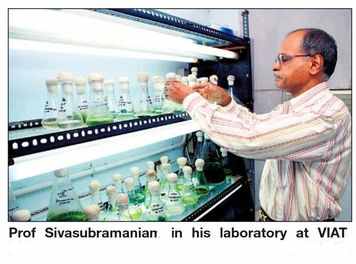New Zealand’s Aquaflow Bionomic Corp. has become the World’s first producer of biofuel from sewage-pond-grown algae. Many consider algae to be an attractive alternative to current biofuel materials—such as corn, soybeans, and palm—because the slime has a high lipid density and could theoretically produce far more oil per acre, reducing the cost of biofuels.
One particular advantage of the human-sewage approach is that algae from sewage tends to have a lot of oil, said Cary Bullock, CEO of Greenfuel Technologies, a company cultivating algae to convert emissions into biofuels
Sewage treatment
Bacteria digestion of organics is the known method to reduce BOD, COD, TSS, TDS etc in Sewage. Anaerobic bacteria proliferate in untreated sewage giving rise to H2S gas that produces the obnoxious smell. Aerobic bacteria require plenty of dissolved oxygen to do the organic digestion.
Untreated sewage is let out into the nearest water bodies where anaerobic bacteria slowly consume the organics and produce H2S that gives rise to bad smell. Further the waters become infested with water weeds and plants like hyacinth. These then become the breeding place of mosquitoes and disease producing organisms.
Micro algae and sewage treatment:
Dr V Sivasubramanian has developed technology and algal strains to effectively treat sewage and produce valuable algal biomass. Micro algae, being photosynthetic, utilize CO2 and evolve oxygen which initiates oxidation of organics in sewage by aerobic bacteria. The resultant degradation products form a rich source of nutrients for algal growth. Micro algae also remove nutrients like nitrates and phosphates thereby reducing eutrophication process.
Biofuels from algal biomass
Micro algal biomass generated from sewage could be utilized for producing the following types of biofuels:
1. Bio-hydrogen
2. Bio-methane
3. Bio-methonol
4. Bio-ethonol
5. Bio-diesel
Bio-diesel from Micro algae
Aquaflow, a Newzeland based company has successfully turned sewage into modern-day gold. Marlborough-based Aquaflow Bionomic has announced that it had produced its first sample of bio-diesel fuel from algae in sewage ponds. It is believed to be the world's first commercial production of bio-diesel from "wild" algae outside the laboratory - and the company expects to be producing at the rate of at least one million litres of the fuel each year.
Dr V Sivasubramanian is exploring the possibilities of growing algae in sewage
Dr V Sivasubramanian visited various localities to assess the extent of sewage available for algae production. By employing micro algae technology not only we can treat the sewage very effectively but also generate valuable algal biomass for energy production.



Sewage sites




